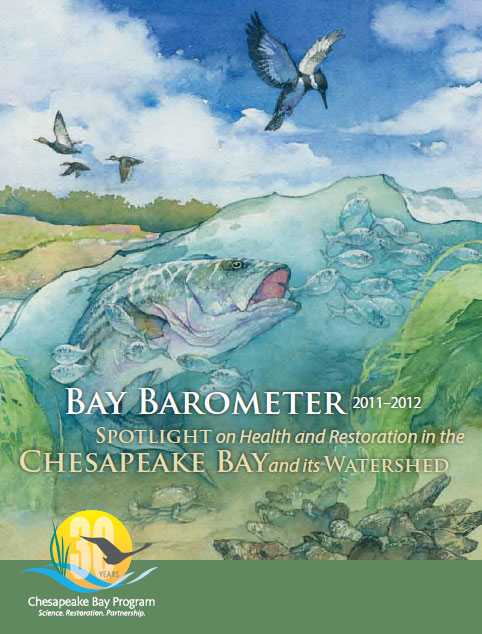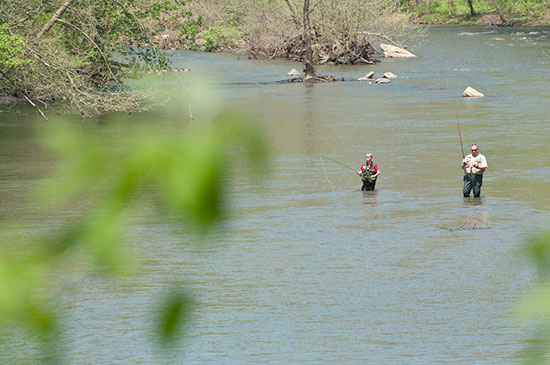Bay Barometer: Bay impaired, but signs of resilience abound
The Bay Program report offers a science-based snapshot of watershed health.
While the Chesapeake Bay Program’s latest look at watershed health reflects the reality of an impaired Bay, signs of the ecosystem’s resilience abound in the science-based snapshot the Program released today.

According to Bay Barometer: Spotlight on Health and Restoration in the Chesapeake Bay and its Watershed, water clarity and dissolved oxygen levels are low, a number of freshwater streams continue to be in poor condition and oyster populations remain at less than one percent of historic levels.
But even as these and other indicators of watershed health point to a stressed ecosystem, early information on how the Bay fared in 2012—from a summertime dead zone estimated to be smaller than normal to the boost in juvenile crabs entering the fishery—gives officials cause for optimism.
Recent restoration work and pollution cuts also offer signs of hope, although it will take time for such efforts to show visible improvements in water quality. The 240 miles of forest buffers that were planted alongside local waterways will stabilize shorelines, remove pollutants from runoff and provide much-needed shade to underwater habitat. The 150 miles of streams that were opened up to increase fish passage will allow migratory fish to reach their once-blocked spawning grounds. And the 15 new public access sites that were added to a list that includes over one thousand more will give watershed residents and visitors new opportunities to boat, fish, observe wildlife and connect with the Bay.

Bay Program partners also estimate that significant steps have been taken toward meeting the Bay’s “pollution diet,” as partners move 20 percent closer to their goal for reducing nitrogen, 19 percent closer to their goal for reducing phosphorous and 30 percent closer to their goal for reducing sediment.
“While we clearly have a lot of work to do, the Bay is resilient and we have reason for hope,” said Bay Program Director Nick DiPasquale. “We know this complex ecosystem will respond to restoration efforts and we expect to see encouraging results in 2012 data as it comes in over the course of the year.”
Learn more about Bay Barometer or read the full report.

Comments
There are no comments.
Thank you!
Your comment has been received. Before it can be published, the comment will be reviewed by our team to ensure it adheres with our rules of engagement.
Back to recent stories